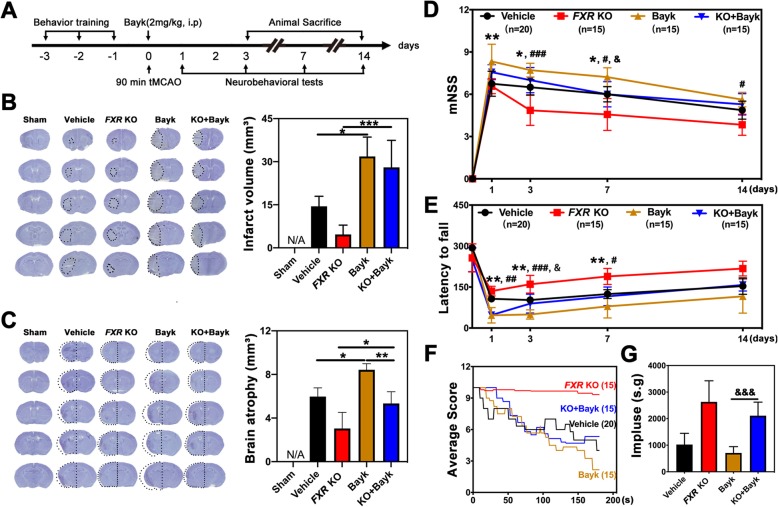Fig. 6.
Bayk8644 treatment reversed the protective effects of FXR knockout after stroke in mice. a Experimental scheme. b Representative cresyl violet-stained brain sections at 3 days of sham mice (sham group), stroke mice treated with vehicle (vehicle group), FXR knockout stroke mice (FXR KO group), wild-type stroke mice treated with Bayk8644 (Bayk group), and FXR knockout stroke mice treated with Bayk8644 group (KO + Bayk group). n = 4–7/group. The brain infarction was circled by the dashed line, and bar graph showed the quantitative analysis of the infarct volume. Data are presented as mean ± SD. *p < 0.05, ***p < 0.001. c Brain atrophy at 14 days in sham group, vehicle group, FXR KO group, Bayk group, and KO + Bayk group were also detected by Cresyl violet; the dashed line represented brain atrophy. Bar graph showed the brain atrophy volume, Data are presented as mean ± SD. *p < 0.05, **p < 0.01. Neurobehavioral recovery was assessed by three separate neurobehavioral tests including modified neurological severity score (mNSS) (d), rotarod performance tests (e), and hanging wire tests (f, g), n = 15–20 per group. Data are presented as mean ± SD. *p < 0.05, **p < 0.01 (vehicle vs. Bayk8644 group). #p < 0.05, ##p < 0.01, ###p < 0.001 (FXR KO group vs. FXR KO + Bayk8644). &p < 0.05, &&&p < 0.001 (Bayk8644 group vs. FXR KO + Bayk8644 group)

